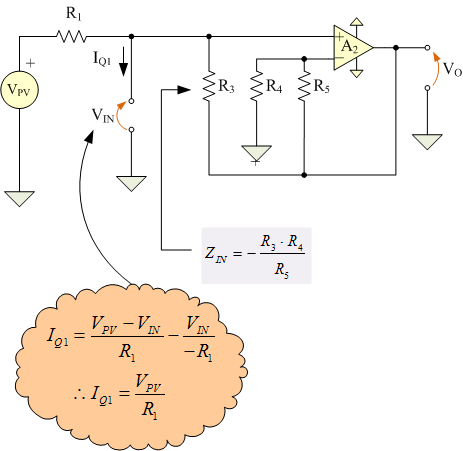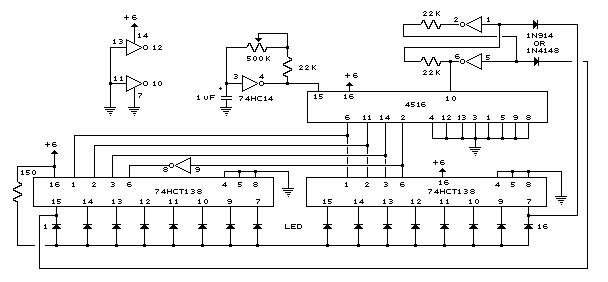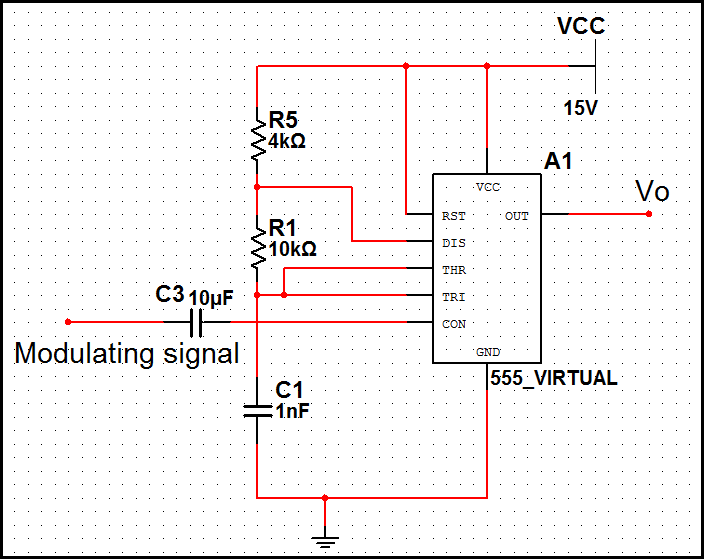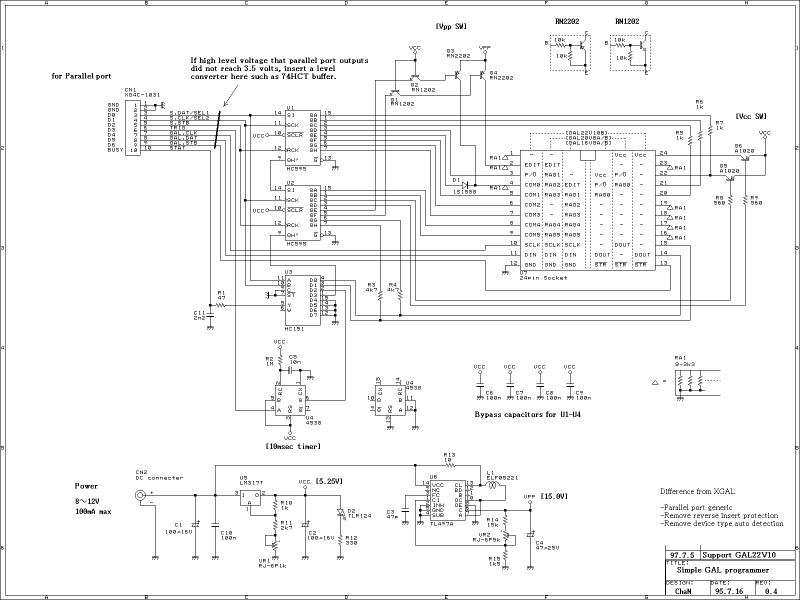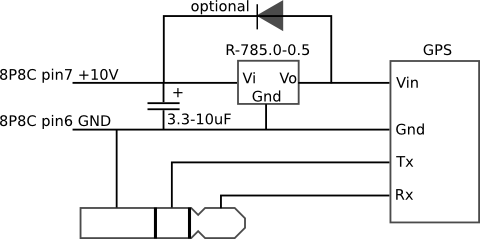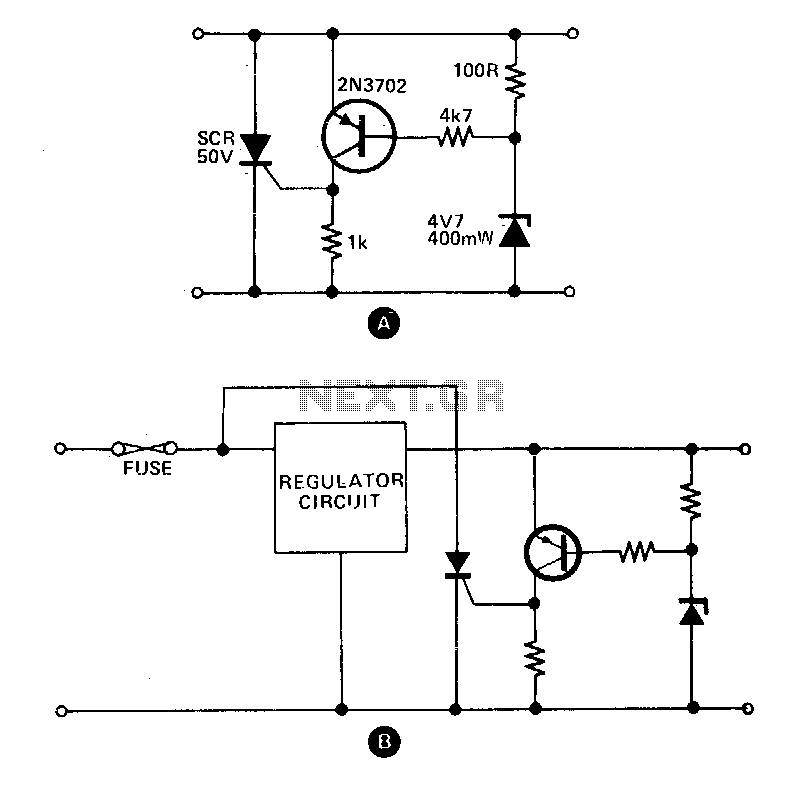
Simple Coil-less AM receiver
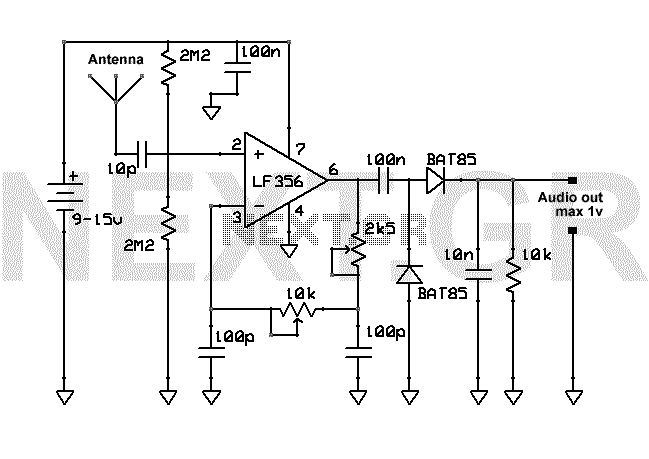
This AM receiver is working perfectly without the need of coils or even a variable capacitor. The LF356 is the basic component. P1 and P2 are the frequency selectors. Use a small telescopic antenna. The stations selectivity is not perfect but is acceptable. More: This circuit can be very small and you can power the circuit with a 9 volt battery.
The described AM receiver circuit utilizes the LF356 operational amplifier, which is known for its high gain and low noise characteristics, making it suitable for audio frequency applications. The absence of coils and variable capacitors indicates a design that employs direct frequency selection methods, likely through the use of capacitive or resistive elements in conjunction with the LF356 to achieve the desired tuning functionality.
P1 and P2 serve as the frequency selectors, allowing for the adjustment of the receiver to different AM radio frequencies. These selectors could be implemented as potentiometers or digital encoders, depending on the design requirements. The integration of a small telescopic antenna enhances reception capabilities, allowing the circuit to pick up AM signals with reasonable efficiency, despite the noted limitations in selectivity.
The compact design of this circuit is advantageous for portable applications, especially when powered by a 9-volt battery, which provides a convenient and readily available power source. The operational amplifier's power supply requirements align well with the 9-volt battery, facilitating ease of integration into a small form factor.
While the selectivity of the stations is described as acceptable, it suggests that the circuit may not fully discriminate between closely spaced frequencies, a common challenge in simple AM receiver designs. This may be mitigated through careful design of the input stage and tuning elements to improve the quality of reception.
Overall, this AM receiver circuit represents a straightforward yet effective approach to AM radio reception, leveraging modern components to eliminate the need for traditional tuning methods while maintaining functionality in a compact package.This AM receiver is working perfectly without the need of coils or even a variable capacitor. The LF356 is the basic component. P1 and P2 are the frequency selectors. Use a small telescopic antenna. The stations selectivity is not perfect but is acceptable.
The described AM receiver circuit utilizes the LF356 operational amplifier, which is known for its high gain and low noise characteristics, making it suitable for audio frequency applications. The absence of coils and variable capacitors indicates a design that employs direct frequency selection methods, likely through the use of capacitive or resistive elements in conjunction with the LF356 to achieve the desired tuning functionality.
P1 and P2 serve as the frequency selectors, allowing for the adjustment of the receiver to different AM radio frequencies. These selectors could be implemented as potentiometers or digital encoders, depending on the design requirements. The integration of a small telescopic antenna enhances reception capabilities, allowing the circuit to pick up AM signals with reasonable efficiency, despite the noted limitations in selectivity.
The compact design of this circuit is advantageous for portable applications, especially when powered by a 9-volt battery, which provides a convenient and readily available power source. The operational amplifier's power supply requirements align well with the 9-volt battery, facilitating ease of integration into a small form factor.
While the selectivity of the stations is described as acceptable, it suggests that the circuit may not fully discriminate between closely spaced frequencies, a common challenge in simple AM receiver designs. This may be mitigated through careful design of the input stage and tuning elements to improve the quality of reception.
Overall, this AM receiver circuit represents a straightforward yet effective approach to AM radio reception, leveraging modern components to eliminate the need for traditional tuning methods while maintaining functionality in a compact package.This AM receiver is working perfectly without the need of coils or even a variable capacitor. The LF356 is the basic component. P1 and P2 are the frequency selectors. Use a small telescopic antenna. The stations selectivity is not perfect but is acceptable.
This circuit can be very small and you can power the circuit with a 9 volt battery.
🔗 External reference